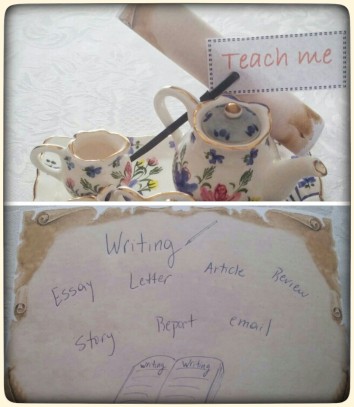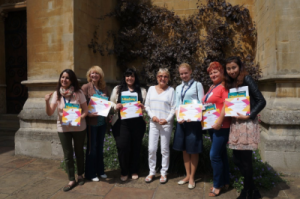Topic: Nature; The Environment
Level: Intermediate to advanced
Grouping: individual or in pairs
Let’s face it, there are always some topics teachers don´t like teaching. However, that doesn´t necessarily have to do with how good you are at teaching the topic but with the fact that you are just not keen on it. Period.
Well, this is, in fact, what happens to me when I start a lesson about “nature”. Or at least it was until I found an inspirational set of videos about objects from nature talking to people that made me eager to start teaching lessons about “the natural world”. The reason for this was that I knew that at a certain point in the lesson I could introduce this awesome project I’m going to tell you about.
About the background of the videos: a series of videos was launched by Conservation International in 2016 with the hashtag #NatureIsSpeaking and the slogan “Nature doesn’t need people. People need Nature.” Each of them is about a natural feature talking to human beings. However, what makes them so special is the tone of the voice who speaks, which generates a poetic and moving atmosphere which makes it impossible not to keep on watching and listening the videos. What’s more, the whole thing is, in turn, a celebrity voice-over campaign, which makes the videos even more far-reaching or engaging for the audience. That is, we have famous people as narrators who are advocating for this movement to raise awareness of environmental protection. To see these inspirational videos you can click here.
What I did to turn this into a class project was use some of these videos as a warm up activity for the lesson. Then, I dealt with the rest of the unit as I usually do by doing the tasks on the coursebook and workbook so that students could get a better insight into nature issues and so that they could acquire specific vocabulary about the topic. The idea is to make them have enough content and specific lexis to make the most of the project.
When we reached the end of the unit I told them about the project which is the following:
- Get in pairs (it can also be done as an individual task, though)
- Choose an object from nature: the sun, the moon, the sky, the water, the forest, etc.
- Start looking for images related to that object and how human beings are threatening it through their actions
- Create a script: a monologue about that object standing for nature talking to humans or a dialogue between that element and another one to raise awareness about the impact of people’s activities on nature
- Sequence your pictures so that they match your script.
- Practice reading the script so that you make sure it lasts at least one minute (maximum a minute and a half). Make the necessary pauses to time this.
- Practice reading the script with an emotional tone: the audience has to be moved by what you are saying
- Use an app or software that you have on your phone or laptop so that you can create the video to edit the sequence and transitions of the images and the audio you are going to record
- Choose background music for your video. Again, it has to contribute to the mood of the topic
- Optional: you can include close captions in your videos
- Present your video to the class
The whole thing can take about two lessons. First, you can watch some of the other videos to remind them what you expect from them. Then, they decide which feature/object they want to be and start looking for related pictures. Once they are ready with that, it’s time for them to become scriptwriters: again, they must be reminded of the importance of the mood of the whole process; nature is being “hurt”, so they need to make people feel guilty but sorry about this which, ideally, would lead to them changing their attitudes and actions towards how they relate to the natural world.
The next step is to choose the app they feel more confident about; one that is as user-friendly as possible. And here, my students themselves came up with the idea of using VivaVideo, which they used directly as a phone app.
Now it’s time to decide on the sequence of the pictures that matches the script and also on the background music to be used.
Last, here comes the part in which they have to record the voiceover for their videos. If they need a quiet place so as not to bother the other pairs, let them scatter around the classroom, the playground or whichever place they find to feel at ease when recording their part. Remember, they are voice-over actors that are not going to be seen but heard so they need to feel as confident as possible; if they are shy, it is a good idea to let them do the recording in a remote place so that their partners don’t hear them doing it.
What can I tell you about the result? Well, that the outcome went beyond my expectations. I was amazed at how even one students that is generally so quiet in class was so engaged since she turned out to be an expert at using VivaVideo and a convincing voice-over narrator. She felt so good that she helped other students to learn to use the app and the special effects of the app. It’s incredible how much an activity like this can generate such involvement and compromise. I got the feeling they forgot about the fact they were in an English lesson since they focused directly on the content and on the environmental problems we were addressing. Undoubtedly, they felt the responsibility to do this seriously, since they got the point was to lead to a deep change of attitude on people’s behavior.
Have a look at two of their productions below:
“If I had a world of my own everything would be nonsense. Nothing would be what it is, because everything would be what it isn’t. And contrary wise, what is, it wouldn’t be. And what it wouldn’t be, it would.”
Lewis Carroll, Alice’s Adventures in Wonderland






 Natalia with the other 2015 winners and Liz Soars, Headway author.
Natalia with the other 2015 winners and Liz Soars, Headway author.


